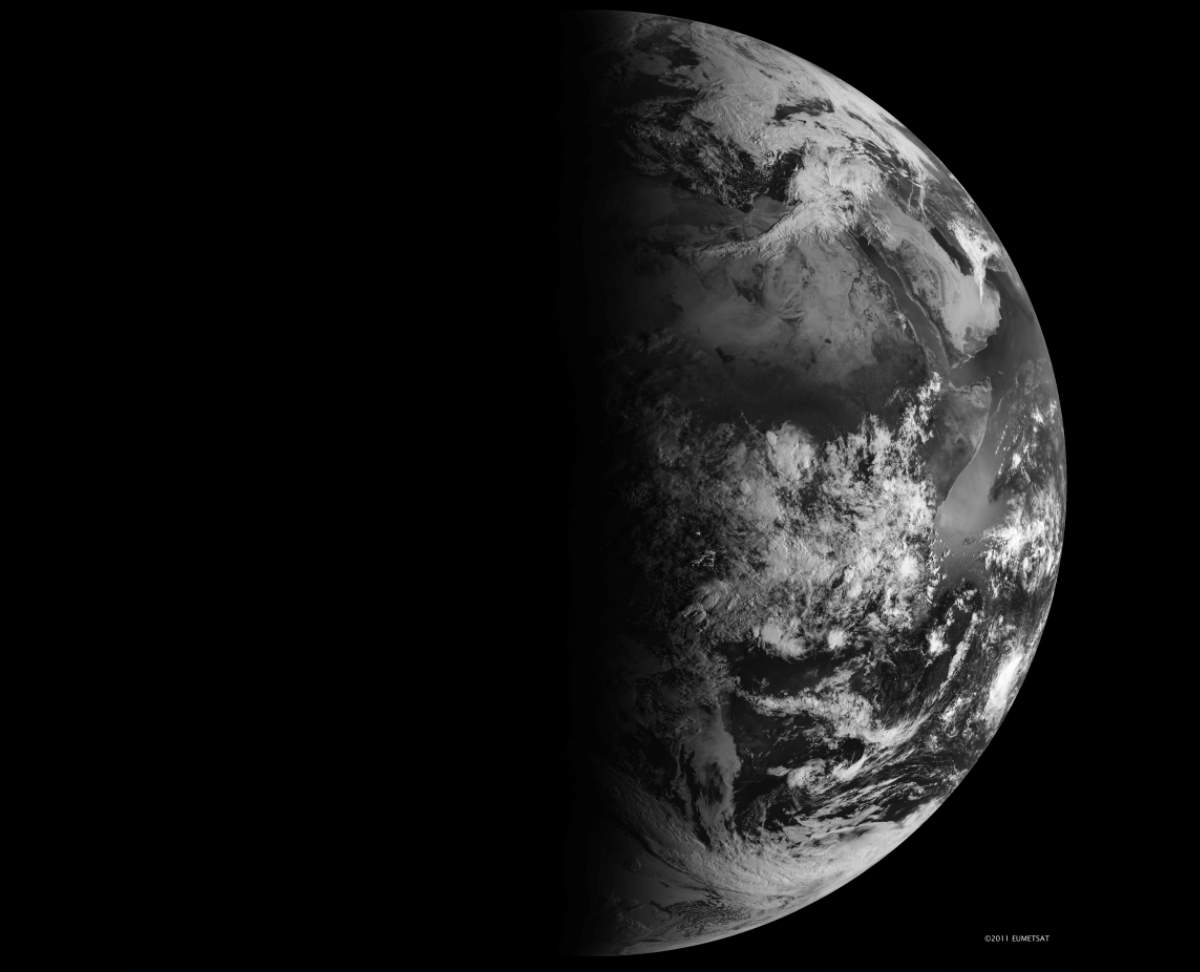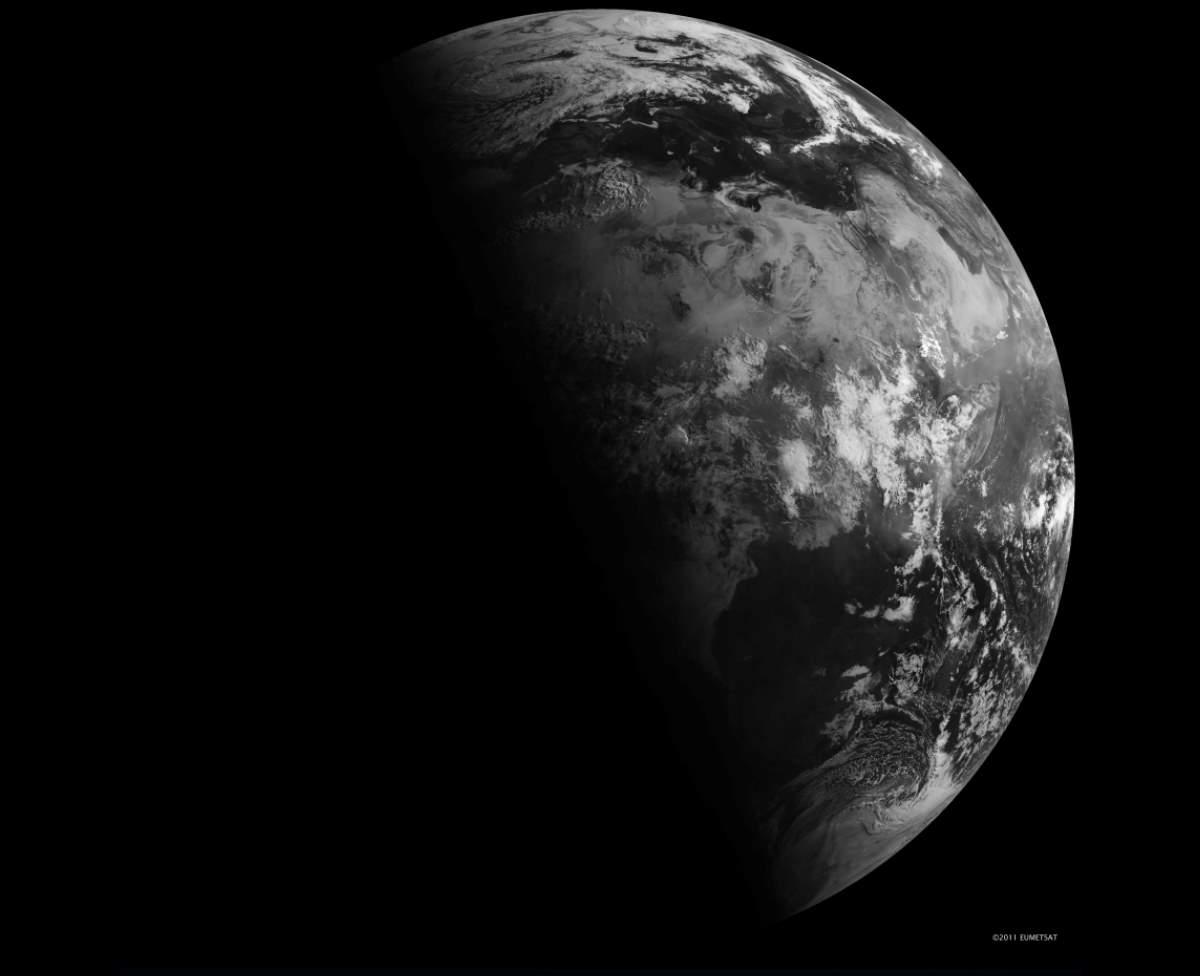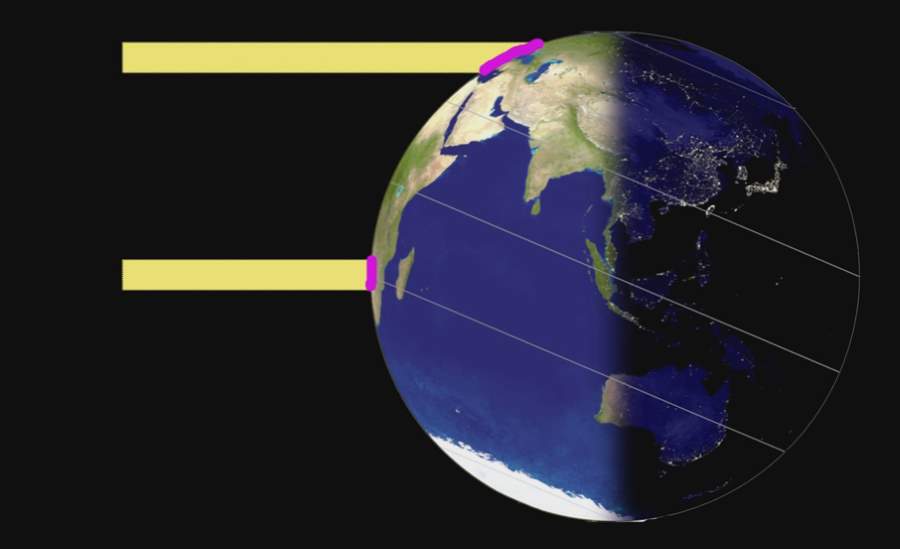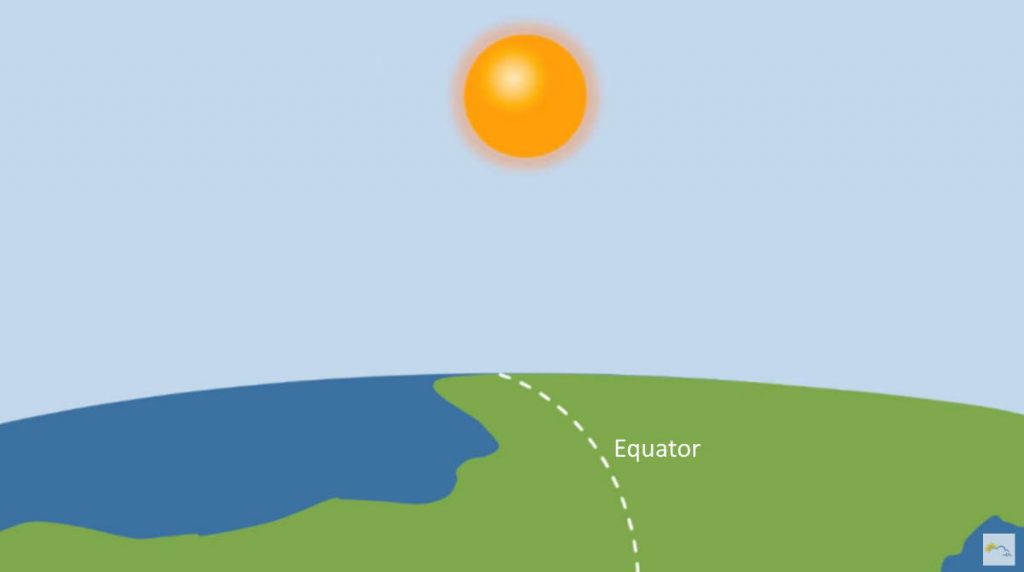Every year, there are two Equinoxes (around March 20 and September 23) and two Solstices (on about June 21 and December 21). Spring and autumn start with an equinox – daylight, and nighttime are of approximately equal duration all over the Earth during Equinoxes. Winter and summer start with a solstice – daylight time is the longest of the year during the summer solstice, and obviously, the night time is the longest during the winter solstice.
The video below, published by NASA Earth Observatory, is a time-lapse from geosynchronous orbit (see notes 1) that shows the four changes of the seasons, related to the position of sunlight on the planet.
Equinoxes

During two Equinoxes, around March 20 and September 23, the terminator (the edge between the shadows of nightfall and the sunlight of dusk and dawn) is a straight north-south line, and the Sun is said to sit directly above the equator. As a result, the northern and southern hemispheres are equally illuminated and daylight and nighttime are of approximately equal duration all over the planet. The word comes from Latin
In other words, the equinoxes are the only times when the sub-solar point is on the equator. The sub-solar point on a planet is where its sun is perceived to be directly overhead). To learn more about the local noon and the subsolar point, see the article titled “How Earth Moves“.
Solstices
A solstice is an event occurring when the Sun appears to reach its most northerly or southerly excursion relative to the celestial equator on the celestial sphere. Two solstices occur annually, on about June 21 (summer solstice) and December 21 (winter solstice). The word solstice is derived from the Latin sol (“sun”) and sistere (“to stand still”), because at the solstices, the Sun’s declination “stands still”; that is, the seasonal movement of the Sun’s daily path (as seen from Earth) stops at a northern or southern limit before reversing direction.
On the “summer solstice” day (it actually occurs at the beginning of the winter in the southern hemisphere, so “June solstice is a more accurate term”) the Sun appears to reach its highest point in the sky at the northern hemisphere, at latitudes outside the tropics. Also, the longest day time and shortest night time of the year occur. Within the tropics, the Sun appears directly overhead at solar noon days to 3 months before and after the summer solstice.

Contrarily, on the “winter solstice” day (which marks the beginning of the summer in the southern hemisphere – December solstice is a more accurate term) the Sun appears to reach its lowest point in the sky in the northern hemisphere. And it’s the longest night for any place other than the Equator. The Earth is positioned in its orbit so that the sun stays below the north pole horizon. After the winter solstice, the days get longer, and the nights shorter in the northern hemisphere (and the opposite is true for the southern hemisphere).

How Seasons Occur
One of the most frequently misunderstood concepts in science is the reason for Earth’s seasons. The seasons are NOT caused by the change in the distance of the Earth to the Sun. Most people think the Earth’s orbit is (and in general, planets‘ orbits are) strongly elliptical (another misconception that is the source of this one). No, the Earth’s orbit is (and in general, planets‘ orbits are) very close to a circle. This misconception is due to orbits being shown from an oblique view in most textbooks (and also in the image below) to save space. Long story short, the seasons are due to the axial tilt of the Earth.


For half of the Earth tilted towards the Sun, one hemisphere receives more solar radiation from the Sun than the other. In the image above, it’s summer in the southern hemisphere, while it’s winter in the northern hemisphere.
Notes
1. Geostationary orbit
A geostationary orbit, geostationary Earth orbit, or geosynchronous equatorial orbit (GEO) is a circular orbit 35,786 kilometers (22,236 mi) above the Earth’s equator and following the direction of the Earth’s rotation. An object in such an orbit has an orbital period equal to the Earth’s rotational period (one sidereal day) and thus appears motionless, at a fixed position in the sky, to ground observers.
Sources
- Seeing Equinoxes and Solstices from Space on NASA Earth Observatory web site
- Equinox on Wikipedia
- Solstice on Wikipedia
- Moon Landings: All-Time List [1966-2025] - February 2, 2025
- What Is Max-Q and Why Is It Important During Rocket Launches? - January 16, 2025
- Top 10 Tallest Rockets Ever Launched [2025 Update] - January 16, 2025
